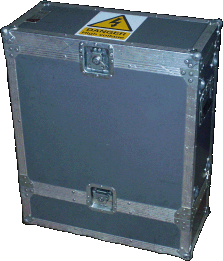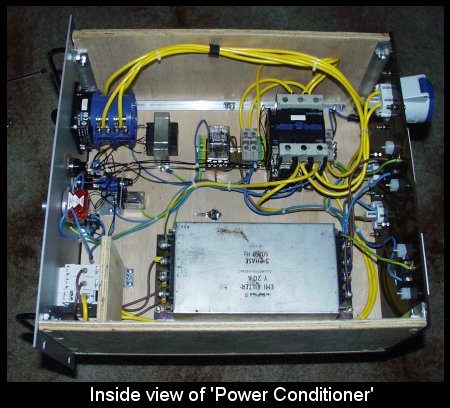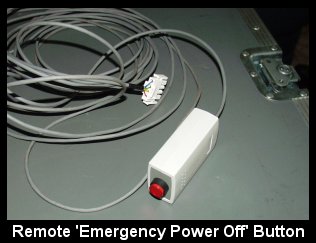

Out of the desire for greater safety the, 'Power Conditioner' was created.

I wanted a box which would plug into the mains supply of the particular venue we were running coils at, that would act as a power distribution point for all the coils that would be fired up. It was to have a contactor capable of taking the full load of the biggest coil so that it could be disengaged at the touch of a button, in case of an emergency, killing all power. It was to incorporate mains filters to clean up any interference the coils injected into the supply line.

The Conditioner is internally rated at 240VAC @40A, with a breaker for protection. It has a main ON-OFF switch, an EPO button, a key activated arming circuit, a connection for the remote EPO circuit and status warning lamps.

At the rear of the unit power comes in (with 'cable live' neon indicator) and out. We have standardised on industrial power connectors which give higher current ratings than normal mains plugs and this also allows us to interchange different parts of each others coils. I did, however, fit one standard 13A socket so we could run other peoples coils too. The 13A socket on the far left is actually an inverted output, i.e. when the main power is OFF this socket is ON (and vice versa). This is used to run an emergency light so than if you kill power during a run in the dark, you will be able to see immediately.

The Conditioner was built as a 19 inch rack mountable unit and is then housed and transported in its own flight case. This gives it a professional look and makes for easy transportation.

The EPO button is operated by an observer, leaving the coil owner free to run his controls. If someone moves too close to the coil, or a component shows signs of failing or catching fire, the observer will kill the power.
In the case of the building supply failing, e.g. if an RCD breaker trips, when power is restored the Conditioner will automatically be in a safe state and power can only be reactivated by using the key.
The Conditioner was first used at the 'Cambridge 2000 Teslathon' with great success. Because of its design we were able to make use of the 32A triple-phase supply that was available, no problem at all!